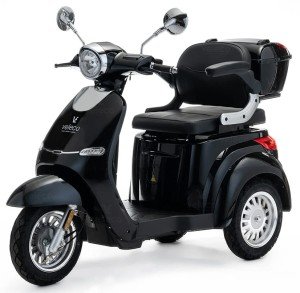Diese Unternehmen hat keine aktiven Jobs
0 Review
Rate This Company ( No reviews yet )
Information Company
- Alle Stellenanzeigen 0 Stellenanzeigen
- Kategorie Business Development
- Full Address 2 Stone St
Etwas über Unternehmen
Guide To Velco: The Intermediate Guide In Velco
Velcro: A Revolutionary Fastening Solution
Introduction
Velcro, a name that has actually nearly ended up being associated with hook-and-loop fasteners, has actually changed the way we think of securing materials. Frequently a staple in various markets and homes, Velcro offers a basic yet reliable option to secure items without the requirement for buckles, buttons, or zippers. This short article explores the origins, mechanisms, applications, and benefits of Velcro in addition to dealing with some regularly asked concerns.
The Origins of Velcro
Velcro was invented in the late 1940s by Swiss engineer George de Mestral. After a searching journey in the Alps, Mestral ended up being amazed by the burrs that adhered to his canine’s fur. Upon closer assessment, he understood they functioned through a system of small hooks that captured anything with a loop, consisting of material and fur. Acknowledging the capacity of this natural fastening mechanism, Mestral embarked on a journey to recreate it in an artificial type. By 1955, he had actually patented his innovation, branding it „Velcro,“ a mix of the French words „velours“ (velvet) and „crochet“ (hook).
How Velcro Works
Velcro includes two separate pieces: a hook side and a loop side. These 2 components interlock when pushed together, producing a strong bond that can be easily released with a simple pull. The functioning of Velcro can be broken down into these primary parts:
| Component | Description |
|---|---|
| Hook Side | This side features small hooks that catch and keep loops. |
| Loop Side | This side consists of soft loops created to accept hooks when contacted. |
System of Fastening
- Interlocking: The hooks on one side capture the loops on the other, producing a physical interlock.
- Strength: The number of hooks and loops ensures a significant holding strength, making it appropriate for both light and sturdy applications.
- Relieve of Use: Velcro can be disengaged and re-engaged numerous times without losing its effectiveness, setting it apart from more standard attachment techniques.
Applications of Velcro
Velcro has actually discovered application across a myriad of sectors, consisting of:

-
Fashion Industry
- Sportswear
- Shoes (especially kids’s shoes)
- Accessories (belts, bags)
-
Medical Field
- Orthopedic devices
- Plasters
- Prosthetics
-
Automotive and Aerospace
- Seat covers
- Interior linings
- Security equipment
-
Home Items
- Curtains
- Rugs
- Organizers
-
Industrial Use
- Cabling
- Devices securing
- Tools storage
Benefits of Velcro
The popularity of Velcro can be credited to numerous advantages it uses over traditional attaching techniques:
- Quick and Easy to Use: No tools are needed, making it easy to use.
- Versatile: Works on numerous surfaces and materials.
- Adjustable: Allows for simple modification in size (e.g., straps).
- Resilient: Holds up under recurring use.
- Washable: Maintains its function even after washing.
Possible Drawbacks
While Velcro is helpful in many contexts, there are some restrictions to be knowledgeable about:
- Noise: The noise of Velcro being pulled apart can be loud in peaceful settings.
- Wear and Tear: Over time, excessive usage might lead to fraying or lowered effectiveness.
- Limitations with Heavy Loads: While it can hold substantial weight, it might not appropriate for extremely heavy items.
FAQs about Velcro
1. Is Velcro water resistant?
Yes, Velcro can be made from waterproof materials, making it appropriate for outside and marine applications.
2. Can Velcro be recycled?
Definitely! Velcro is developed for repeated use, and lots of items can be resealed and opened multiple times.
3. How do you tidy Velcro?
Cleaning up Velcro is easy. You can use a lint roller or a soft brush to eliminate debris. For stubborn dirt, it might be washed carefully with water.
4. Is Velcro strong enough to change zippers?
In lots of applications, yes, Velcro can successfully replace zippers, especially in circumstances where quick fastening and loosening are required.
5. Are there different kinds of Velcro?
Yes, there are lots of types, consisting of varying widths, Velco colors, adhesive strengths, and materials created for different applications (i.e., high-temperature, outdoor, etc).

Velcro has actually shown to be a versatile and innovative securing solution that has infiltrated several sectors, improving both everyday life and industrial applications. Its ability to provide a reputable and user friendly method of fastening makes it an enduring element of modern style. From casual garments to sophisticated medical applications, Velcro continues to support its track record as a staple fastening approach for countless usages. Whether it’s for the fashion enthusiast or an expert in the medical field, Velcro stays an unsung hero worldwide of fastening innovation.
By revolutionizing how we connect and protect items, Velcro is a testament to the power of innovative thinking and simpleness in design. As innovation progresses, we can just prepare for a lot more innovative applications for this amazing development in the future.

